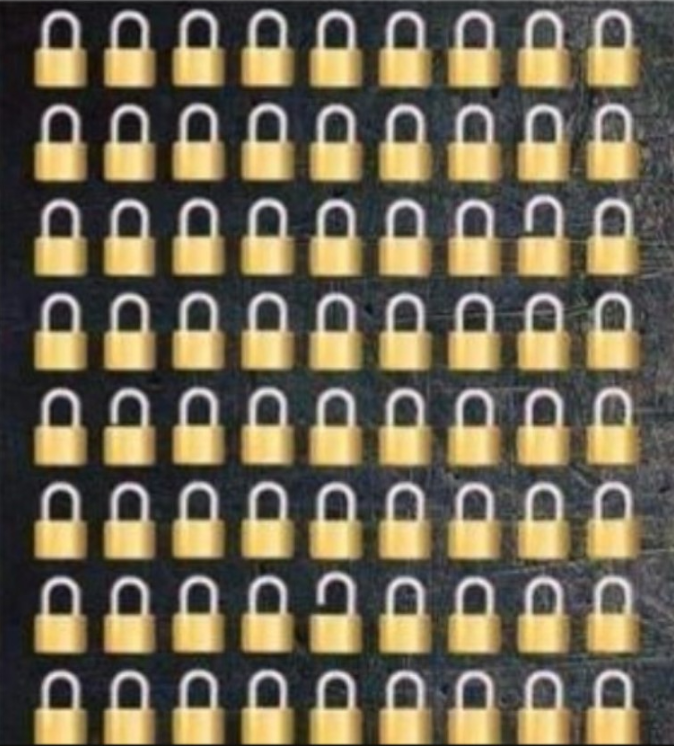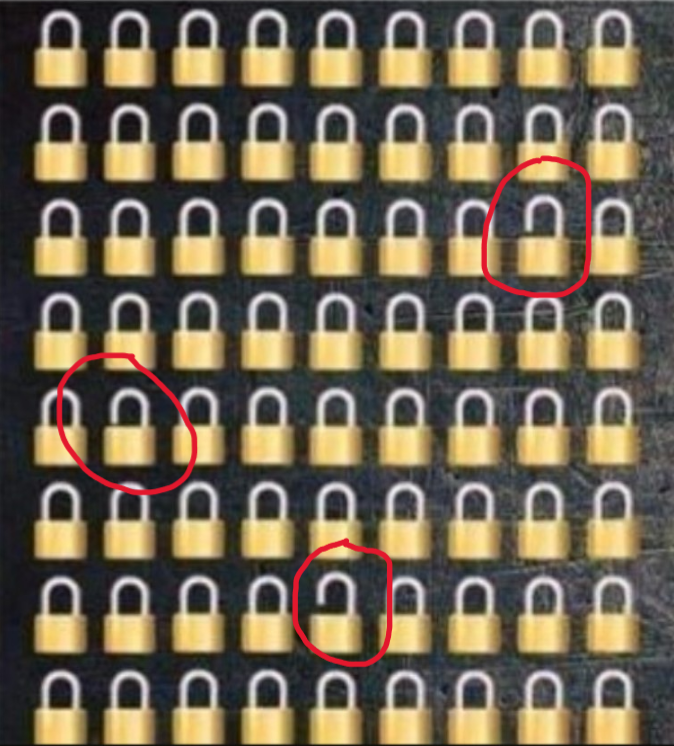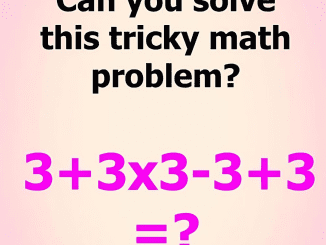When it comes to brain-teasing puzzles, visual challenges like identifying how many locks are open from a sea of padlocks can be quite engaging. Not only do they test our observational skills, but they also add a layer of fun to the daily mental exercise. A simple question like “How many locks are open?” might seem straightforward, but often, it is these small challenges that truly push us to sharpen our focus.

Observing details isn’t just a skill reserved for detectives and investigators. It’s a valuable skill for everyone. Being able to notice small differences in a large group, such as identifying the open locks in a grid of closed ones, hones attention to detail and critical thinking. In fact, these kinds of puzzles can act as a form of cognitive exercise, keeping your brain engaged and active.
If you take a few moments to scan the image carefully, you can see that three locks are subtly different from the rest. While most locks remain tightly secured, there are three that stand out with their unlocked mechanism.
The challenge presents itself as a pattern recognition exercise. You are greeted with an array of locks, all seemingly identical, but your mission is to find the ones that deviate from the standard — the ones that are unlocked. This type of puzzle requires you to sift through the visual noise to find the right answer, a skill that improves with practice.
The locks that are unlocked do not shout out their presence; instead, they hide among the rest, encouraging you to slow down and appreciate the nuances. This is why puzzles like these can be both frustrating and rewarding. Once you spot the three open locks, it brings a sense of satisfaction, as if you’ve uncovered a hidden secret.
While it may seem like all locks are identical at first glance, upon closer inspection, you’ll notice subtle differences. In this case, the question has caught the attention of many viewers: how many locks are actually open? The answer, after a sharp-eyed observation, is three.

You may wonder why exactly three locks are open. The puzzle designer likely chose this number to keep the challenge engaging but not overly difficult. If there were only one open lock, it might be too easy to find. On the other hand, having too many open locks could make the challenge feel less rewarding. Three strikes the perfect balance—it’s enough to test your patience without overwhelming you.
If you look carefully, the open locks in the grid may not follow a direct pattern, making it necessary to scan each lock individually. The difference between an open lock and a closed one might be as simple as the small gap between the latch and the body of the lock. These small distinctions make all the difference in completing the puzzle.
In conclusion, while the task of finding three open locks might seem small, the benefits extend far beyond the puzzle itself. Engaging in brain games and visual challenges sharpens our minds, increases attention to detail, and provides a break from everyday tasks. So next time you see a seemingly simple question like “How many locks are open?” take a moment, use your sharp eyes, and enjoy the satisfaction that comes with unlocking the answer.


